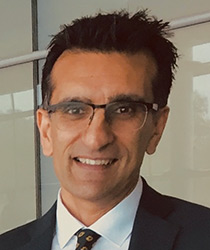Exploring a framework for a resilient and sustainable future and how businesses should look to re-balance their operations.
Governments, businesses, and citizens are starting to realize the perpetual impacts of the pandemic. Ongoing geopolitical shocks, global energy, and food supply constraints caused by the war in Ukraine are fuelling inflationary pressures and creating a cost-of-living crisis across many parts of the world. At the same time, mega trends (shift in global economic power, demographic shifts, rise of technology, climate change, and resource scarcity) continue to challenge the status quo across economic, environmental, and social areas.
Seeking new and sustained value creation against a backdrop of constant disruption requires an agile process of planning and course correction to balance and rebalance business operations. Whether you’re a start-up or a global multi-billion-dollar company, organizations need to pivot and reallocate resources across their portfolios such as materials, people, equipment, cash etc. So, what are some of the key components to achieve these optimal pathways to becoming a resilient enterprise?

Category and Supply Chain Managers play a crucial strategic planning role in finding these optimal pathways. They help to optimize operational effectiveness while managing dynamic cost structures – particularly in volatile markets. They also support complex decision-making when tough trade-offs need to be made between margin and revenue plans.
Increasingly, organizations are grappling with sustainability trade-offs. Should they focus on profit or purpose – or profit and purpose? Currently the pendulum has swung toward the cost and profit agenda with the unprecedented market supply constraints. Supply chains are moving from just-in-time to just-in-case scenarios. However, should organizations focus on seeking to be relevant and differentiating by accelerating towards circular value chains, recognizing the current trade-offs in investment and risk?
Another example of planning optimal pathways relates to corporate consciousness. Whether by purposeful choice or market demands, organizations have to walk the line between critical stakeholders and discerning shareholders. Whether your charter is stakeholder or shareholder driven, both require viable cost structures to be sustainable. For the pendulum to shift from profit to purpose and be in a state of equilibrium, financial and sustainability metrics need to come together. Decision-making models such as ROSITM (Return on Sustainability Investment) and Value Balance Alliance are activities that can help move towards these optimal pathways.
Planning for optimal pathways requires an understanding of the complex environment we operate in, the multiple forces at play and the outcomes that are relevant. A total systems perspective supports such an environment and recognizes the interdependency of stakeholders and the forces at play in such a complex ecosystem.
The stakeholder actors can be regulators, policy makers, NGOs as well as businesses. The nature of the interactions is typically centered around principles of openness, trust, and shared ownership. This could manifest in business and technical standards that facilitate the exchange of data and information along and end-to-end value chain reflecting these principles.
In the real-world, this is reflected in examples such as managing scope 3 emissions or Getting Human Rights right in Business. Often the challenges are so large, they can only be solved in cooperation and partnership. To find the optimal pathways requires an engagement model that ensures all stakeholder interests are met and are incentivized with vested business models with shared prosperity at their core.
At a time when the world is looking inward, and supply chains are near shoring driven by nationalistic demands, cooperation and collaboration are being tested more and more. In times of stress, the people connection will always cross these boundaries on a basis of common values for a greater good. Whether this is economic, environmental, or social good, an interconnected ecosystem of people, processes and systems provides the recipe for symbiotic relationships to thrive and provide the source of the new value creation.
Examples of such open and collaborative ecosystems are Grameen Nippon, empowering women to end poverty via microloans. Or Catena-X, an automotive data-sharing platform that provides transparency of carbon footprint, social and environmental standards in the supply chain.
While a total systems approach can help us navigate through complexity and uncertainty, it can have some short comings such as black swan events that render the system incomplete. Or legacy systems laden with organizational inertia, exposing the fragile nature of our systems to adapt in a timely fashion. Consequently, people remain relevant and play a crucial role in augmenting systems that are becoming increasingly intelligent.
While re-balancing and optimizing in an agile manner allows us to find and extract new value in a world of constant uncertainty, today it’s still people with their wisdom and corporate consciousness that help us navigate through uncertainty.
This article is the second in a series of three. You can find the first article here From Resilient Supply Chains to Sustainable Growth. In the final article in the series, I’ll explore how to ensure that growth is sustainable, as we continue to operate within confines our planetary resources and boundaries.

Tahir Virk, Director, Global Strategy & Innovation, Intelligent Spend Management, SAP, is a subject matter expert in supply chain, procurement and enabling technologies. With over 25 years’ experience across multiple global organizations, he has held various roles from strategy to leadership and innovation to operations.
In this episode, I sat down with Beejan Giga, Director | Partner and Caleb Emerson, Senior Results Manager at Carpedia International. We discussed the insights behind their recent Industry Today article, “Thinking Three Moves Ahead” and together we explored how manufacturers can plan more strategically, align with their suppliers, and build the operational discipline needed to support intentional, sustainable growth. It was a conversation packed with practical perspectives on navigating a fast-changing industry landscape.